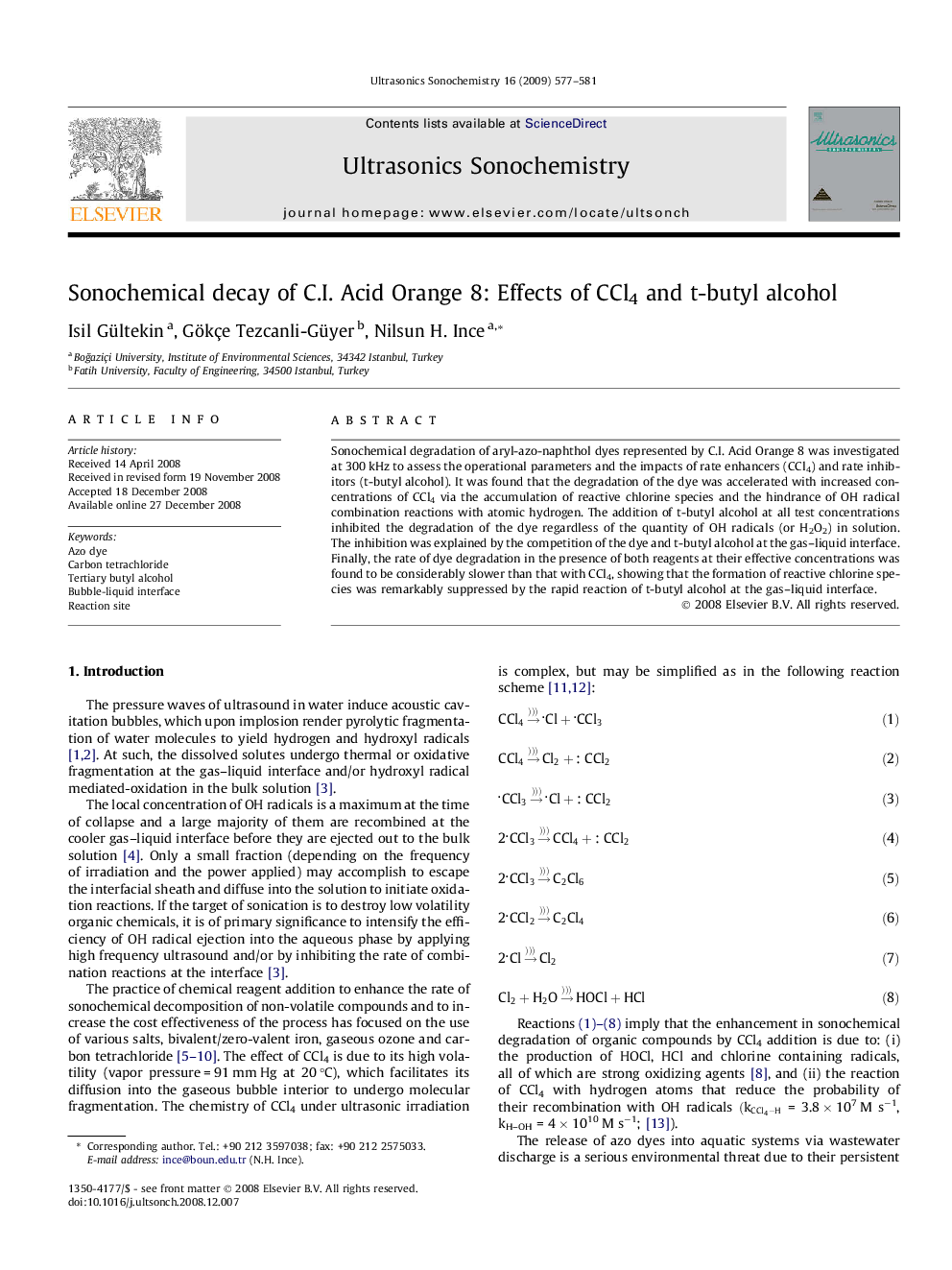| Article ID | Journal | Published Year | Pages | File Type |
|---|---|---|---|---|
| 1269887 | Ultrasonics Sonochemistry | 2009 | 5 Pages |
Abstract
Sonochemical degradation of aryl-azo-naphthol dyes represented by C.I. Acid Orange 8 was investigated at 300Â kHz to assess the operational parameters and the impacts of rate enhancers (CCl4) and rate inhibitors (t-butyl alcohol). It was found that the degradation of the dye was accelerated with increased concentrations of CCl4 via the accumulation of reactive chlorine species and the hindrance of OH radical combination reactions with atomic hydrogen. The addition of t-butyl alcohol at all test concentrations inhibited the degradation of the dye regardless of the quantity of OH radicals (or H2O2) in solution. The inhibition was explained by the competition of the dye and t-butyl alcohol at the gas-liquid interface. Finally, the rate of dye degradation in the presence of both reagents at their effective concentrations was found to be considerably slower than that with CCl4, showing that the formation of reactive chlorine species was remarkably suppressed by the rapid reaction of t-butyl alcohol at the gas-liquid interface.
Related Topics
Physical Sciences and Engineering
Chemistry
Chemistry (General)
Authors
Isil Gültekin, Gökçe Tezcanli-Güyer, Nilsun H. Ince,
